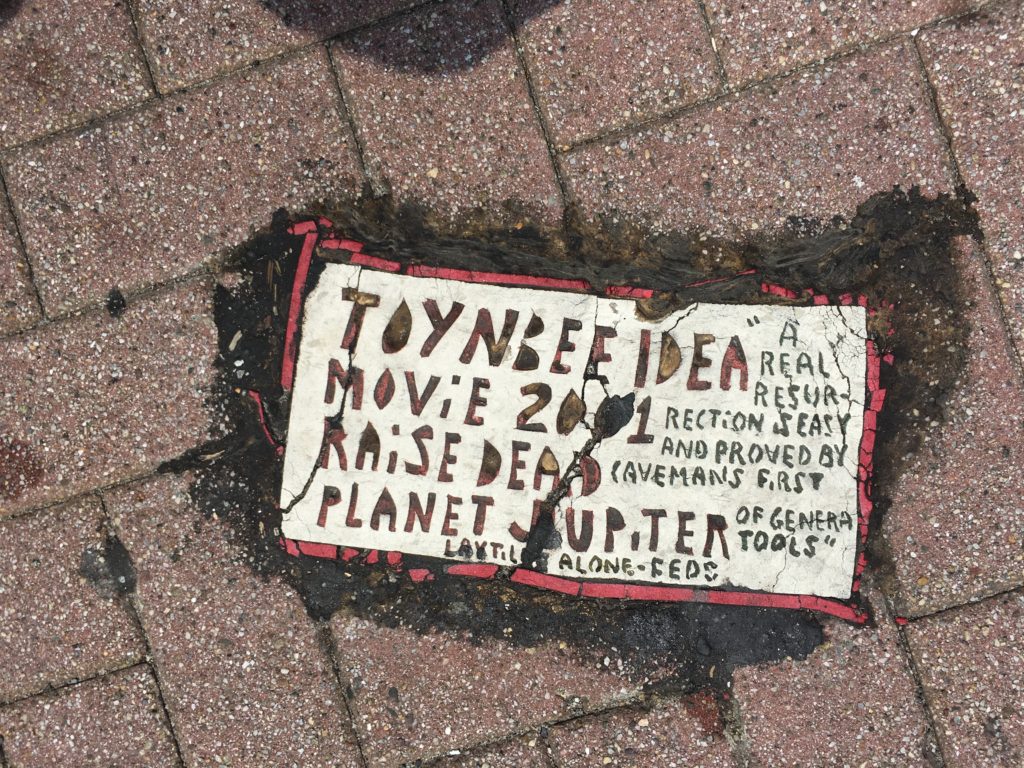Joan Jett sings Roadrunner on the David Letterman show in 1987, switching out The Modern Lovers’ Massachusetts imagery for some New York-inspired lyrics.
You begin to interest me…vaguely
Joan Jett sings Roadrunner on the David Letterman show in 1987, switching out The Modern Lovers’ Massachusetts imagery for some New York-inspired lyrics.
Many of Tom Petty’s music videos in the 1980s were imaginative, visually rich movies that were inspired by earlier literary works.
Things get started in 1982 with You Got Lucky, in which the Heartbreakers motor through a presumably postapocalyptic desert and rediscover the boom box and electric guitar. The Mad Max aesthetic is more derivative than inspired, but the band demonstrates that they can wear hats well, and Battlestar Galactica and an animated Chuck Berry make fleeting appearances.
His creative, ultimately disturbing, 1985 video with the Heartbreakers for Don’t Come Around Here No More has a very ’80s Alice trapped in Wonderland, with Petty as the Mad Hatter (top hats were a thing for him). The song was written with Dave Stewart (Petty’s next door neighbor when an arsonist set fire to Petty’s house), who claimed it was inspired by a Carrollesque night he spent at a party at Stevie Nicks’ house.
Runnin’ Down a Dream, from his 1989 solo album, is a black and white animated video inspired by the early twentieth century comic strip Little Nemo in Slumberland. Petty is led through a dream landscape by a small, cigar-chewing figure wearing a crown, a clear homage to Slumberland‘s Flip the clown. On his adventure, there are allusions to Wonderland, Georges Méliès’ A Trip to the Moon, and King Kong.

One of the many mysterious Toynbee Tiles. This one was seen stuck to the street in Atlantic City, New Jersey, near the Forever 21 outlet store.
The tiles are cut from linoleum and stuck to the road surface. The words consistently refer to the movie 2001: A Space Odyssey, resurrection, and Jupiter.
They are found in and around Philadelphia, in New Jersey, and in many other cities primarily along the Boston-Washington D.C. axis, but also as far away as Santiago, Chile. The original ones, first sighted in the 1980s, were likely the work of one individual, but new ones (probably including the one above) that have appeared in the last few years probably have been placed by copycats.
While many Toynbee tiles have been destroyed or covered over by road repaving, one government group, the Philadelphia Streets Department, at least made an effort to preserve some of them . Are they worthy of preservation? If you peel up ephemeral street art and put in a museum, is it still ephemeral street art? As the original Toynbee Tiles are threatened with extinction in the wild, they may live forever, if not on Jupiter, at least in cyberspace.
Sticking with the 90s Volkswagen theme for a bit longer, 1997, in addition to the Trek Bike joint venture, was also the year VW marketing scored with a commercial for the Golf that polished off the early 80s song Da Da Da (full title: Da Da Da, ich lieb’ dich nicht du liebst mich nicht aha aha aha), by the band Trio.
“I’d buy myself some stylish clothes but I sure hate to pay.” Hard to beat a yellow t-shirt and button shirt. Pennywise positive thinking from the back of the car by John Mellencamp.
Self-abnegation with cowbell: Delbert McClinton, Live from Austin, 1989
Darlene Love’s first appearance on Late Night in 1986, singing Christmas (Baby Please Come Home). With a bonus Spuds MacKenzie commercial afterwards!